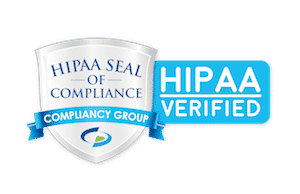An article published in JAMA Internal Medicine, April 2016 by Judy Jou, MA and Pamela Jo Johnson, MPH, PhD examined patterns of the use of complementary and alternative medicine (CAM), as well as rates of disclosure of CAM use to physicians. Data was collected through the 2012 National Health Interview Survey (NHIS) and CAM supplement to the Survey. Of the 34,525 adult patients that completed the CAM Supplement to the NHIS, 10,158 of those patients, or 29.6%, reported using CAM at least once in the past year. Just over 60% of patients surveyed also had a primary care physician. Among those who both had a primary care physician and used CAM in the past year, 3,094, or 42.3%, did not disclose their CAM use to their physician.
The CAM Supplement to the NHIS asked about several different categories of CAM: herbal and other dietary supplements, chiropractic and/or osteopathic manipulation, massage, yoga, tai chi or qi gong, mantra or mindfulness meditation, special diets, acupuncture, homeopathy, and “other”.
Use of herbal or dietary supplements and acupuncture were the mostly commonly disclosed categories, 75.1% and 64.5% respectively. It is a good sign so many patients disclose use of herbal and dietary supplements, but this does leave another 25% still at risk for a potential interaction between supplements and medications, or a cumulative supplement-drug-gene interaction that is unknown to their doctors. Read more about supplements, your drug regimen, and genetic profile in our previous blog post. The least disclosed forms of CAM were yoga, 35.3%, and meditation, 36%, respectively.
Patients were also asked to provide their reason(s) for nondisclosure of CAM. The primary reason provided was predictable but worrisome; 57% of those patients who did not disclose their CAM use did not do so simply because their physician did not ask. The second most common reason is fairly worrisome as well, 46.2% of those patients who did not disclose CAM use didn’t do so because they believed their physician did not need to know about their CAM use. Clearly, there needs to be more conversation about CAM in contemporary medical practice.
Conversations about CAM between doctors and patients can be mutually beneficial for both an individual patient’s health as well as enabling physicians and researchers to learn more about patient experiences with CAM. With disclosure of CAM use, the physician may advise complementary treatments that can support traditional medical therapy, provide potential alternates to therapies to which the patient is not responding, or steer the patient away from a particular CAM that may be harmful or exacerbate their condition. Most forms of CAM lack rigorous studies about efficacy, or about potential harm. With the rise of precision medicine, disclosure of all CAM use could be incorporated into tools that may lead to personalized treatment that may one day be used to benefit other patients with similar conditions. The ability to examine CAM use on a much larger scale, like that intended by the Precision Medicine Initiative, would allow doctors and researchers to more accurately and more thoroughly analyze alternative treatments to the same degree as standard treatments.
As we await integration of personal health behaviors into health systems on a precision medicine scale, with roughly one third of adults in the US regularly incorporating CAM into their regimen and over forty percent not disclosing their use, physicians and patients alike must make an effort to increase the conversation about complementary and alternative medical treatments.

